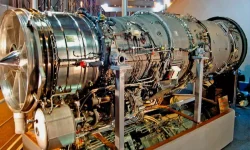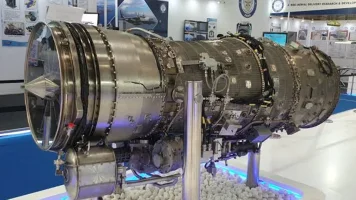- Views: 5K
- Replies: 16

The Kaveri engine, a project conceived in the 1980s to propel India's indigenous Light Combat Aircraft (LCA) Tejas, remains unavailable even after decades of development. A confluence of technical complexities, project management issues, and external constraints have hampered its progress.
Technological Challenges
Thrust Deficiency and Weight Issues: The Kaveri engine consistently struggled to achieve the necessary thrust, falling short of the LCA's operational demands. Its weight also proved problematic, impacting the aircraft's overall performance. Efforts are underway to address these issues through material improvements and component optimization.Reliability and Durability Concerns: The engine faced significant hurdles in maintaining reliability and durability, especially under the demanding high-altitude, high-temperature conditions required for combat aircraft. Critical components like turbine blades proved particularly vulnerable.
Materials and Manufacturing Limitations: India's limited capabilities in advanced materials technology and precision manufacturing further compounded the challenges. Developing high-temperature materials and producing complex components with the required precision proved daunting.
Testing and Validation Issues
Lack of Testing Infrastructure: The absence of comprehensive testing facilities, especially for high-altitude conditions, hampered the engine's validation under operational scenarios, leading to delays and incomplete assessments.Limited Iterative Testing: Budgetary constraints and inexperience restricted the number of iterative tests and refinements essential for perfecting the engine's design, slowing down the development process.
Project Management and Delays
Overly Ambitious Goals: The Kaveri project's initial goals were arguably overambitious, given India's technological and industrial base at the time. The timeline was optimistic, and the complexities involved in developing a jet engine from scratch were likely underestimated.Frequent Design Changes: The evolving design specifications for the Tejas aircraft necessitated constant modifications to the Kaveri engine, adding further delays to the project.
International Sanctions and Technology Denials
Post-Pokhran Sanctions: International sanctions imposed after India's nuclear tests restricted access to critical technologies and materials, impacting the Kaveri engine development. Key technologies from Western countries became inaccessible.Limited International Collaboration: Concerns over intellectual property and security limited collaborative opportunities with foreign entities, hindering India's acquisition of crucial know-how that could have expedited the engine's progress.
Funding and Resource Constraints
Inconsistent Funding: The Kaveri project faced fluctuating funding throughout its lifecycle. Delays and cost overruns strained the budget, necessitating compromises in research and development activities.Human Resource Challenges: A shortage of specialized professionals experienced in jet engine development posed challenges in attracting and retaining top engineering talent critical for such a complex undertaking.
Positive Developments
Despite the setbacks, recent reports suggest progress.Successful High-Altitude Testing (February 2023): The dry Kaveri engine successfully underwent high-altitude testing, demonstrating its capability to operate effectively in challenging environments.
Improved Thrust Output (Projected): With the integration of a new afterburner, the dry Kaveri engine is expected to produce thrust exceeding 80kN, potentially surpassing the F-404 engine currently used in the Tejas Mk1A.
Flat-Rated Engine Design: The Kaveri engine's flat-rated design allows it to maintain consistent performance regardless of ambient temperature or flight speed, making it well-suited for India's hot and humid climate.
Potential for Future Upgrades: The Kaveri engine project envisions the development of the Kaveri-2 engine, capable of generating thrust between 90-95kN. This enhanced power output could make it suitable for more advanced Tejas variants and other future combat aircraft.
Initial Flight Release Certification (Projected 2024): The dry Kaveri engine is expected to receive its Initial Flight Release (IFR) certification by 2024.
The Path Ahead
India's pursuit of self-reliance in aero-engine technology is a long and complex journey. Overcoming these challenges necessitates sustained commitment, substantial investments in R&D and infrastructure, and strategic international collaborations.While the Kaveri engine project has faced numerous hurdles, recent developments offer a glimmer of hope. If these efforts prove successful, India could finally achieve its goal of powering its indigenous fighter jets with a homegrown engine, marking a significant milestone in its aerospace capabilities.




